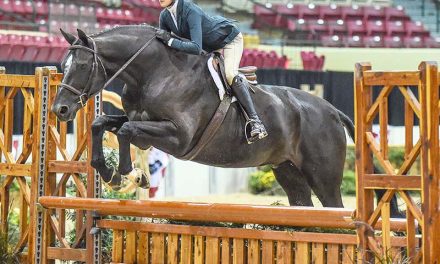Not an exciting election for local and state politics, from the Maryland horse industry’s perspective. No potential gubernatorial upset. No State Senate smackdown, no hotbed for the House. No referendums on controversial issues such as slots.
On Nov. 8, 2016, Marylanders will be focused on the federal elections and a grab bag variety of elections within Maryland, such as state and local judges and school boards.
For the sanity of our readers, we are going to ignore the “top ballot” contest for president, instead casting a glance at the “down ballot.”
Senators & Congressmen
Maryland has two Senatorial seats (as do all states) and eight Congressional seats. Senator Barbara Mikulski is retiring and her seat is up for grabs. All of Maryland’s Congressmen are up for reelection:
- Elijah Cummings (D, District 7)
- John Delaney (D, District 6)
- Donna Edwards (D, District 4)
- Andy Harris (R, District 1)
- Steny Hoyer (D, District 5)
- Dutch Ruppersberger (D, District 2)
- John Sarbanes, (D, District 3)
- Chris Van Hollen (D, District 8)
(To figure out who represents you, please click here.)
While we cannot bring you, in the confines of these post, a complete record of how these Congressmen have represented the horse industry on Capital Hill, we can report on recent positions that affect our community.
In 2015, seven of Maryland’s eight Congressmen co-sponsored the Prevent All Soring Tactics of 2015, HR 3268, all but Andy Harris.
However, Congressman Andy Harris did co-sponsor an important bill for the horse industry, the Strengthen Employment and Seasonal Opportunities Now (Season) Act H.R. 3918. And although she is retiring, it should be noted that Senator Barbara Mikulski co-sponsored the Senate version, Save our Small and Seasonal Businesses Act of 2015, Senate Bill 2225.
According to the American Horse Council, the bills would have made many needed reforms to the H-2B temporary, nonagricultural worker program. The H-2B program is used by members of the horse industry, principally horse trainers and owners who cannot find American workers to fill semiskilled jobs at racetracks, horse shows, fairs and in similar nonagricultural activities. However, on April 29, 2015, the Department of Homeland Security (DHS) and Department of Labor (DOL) issued a final interim H-2B temporary guest worker program rule and a final wage rule. These rules have made H-2B even more costly and burdensome for employers who are forced to use the program.
Improvements to the H-2B program have been a priority of the horse industry for many years. The difficulty that horse farms, horse shows, trainers and others have had recruiting American workers has forced many to use the H-2B program to meet their labor needs, even though it is costly, time consuming and unreliable. These bills would overhaul the H-2B program and fix some of problems that have plagued the program while maintaining protections for both American and H-2B workers.
However, none of Maryland’s representatives joined the other 118 co-sponsors of Fixing America’s Surface Transportation Act (FAST Act), HR 22, but all voted in favor of it, and it is now law. Everyone who rides on trails in Maryland should appreciate this, as this funding eventually trickles down to improve our trails. The FAST Act reauthorized the Federal Highway Administration’s Recreational Trails Program (RTP) for the next five years, providing $85 million annually for the program. Since its inception, the RTP has provided approximately $730 million for thousands of state and local trail projects across the country, including many that benefit equestrians. For the program to continue it needed to be reauthorized in the 2012 Highway Bill.
The RTP provides funding directly to the states for recreational trails and trail-related facilities for all recreational trail users. It was created in 1991 as part of the Intermodal Surface Transportation Efficiency Act of 1991 and was last reauthorized in 2005 as part of the Safe, Accountable, Flexible, and Efficient Transportation Equity Act (SAFETEA- LU). This law is about to expire. The RTP will have to be reauthorized in the national surface transportation program bill in the coming months if it is to continue.
RTP projects consist of construction, maintenance and restoration of trails and trail-related facilities as well as the acquisition of easements or property for trails. Although each state manages its own program, 30% of RTP funds must be spent on nonmotorized projects such as equestrian trails, 30% on motorized, and 40% percent on multiuse projects. RTP is one of the few sources for federal funding of trail projects available to equestrians that are not on federal land. The program has been a great resource for equestrians to fund projects in their state and local parks.
The bill reauthorizes the Federal Highway Administration’s Recreational Trails Program (RTP) for the next five years and allocates $85 million in annual funding for the program.
Very Very Local
Also part of the “down ballot” will be elections for judges and school boards, and we urge our readers to avail themselves of their local general media sources (digital and print) to learn more about the candidates they are electing. Judges will make rulings on cases that could affect your business directly or issues you care about, such as animal cruelty, workman’s comp, property seizures and liability.
School boards influence curriculum; in addition to the debates surrounding STEM programs are debates about whether or not to include learning programs provide outside organizations with often competing missions and agendas, including (but not limited to) Ag in the Classroom, PETA (People for the Ethical Treatment of Animals), and even a new education initiative that will soon be launched by the Maryland Horse Industry Board. And let’s not forget the controversy surrounding the start of the school year and whether or not the Governor has the power to declare that school will start after Labor Day, or whether that is a local school decision. These are issues that will affect your family, your farm, your current and future labor pool.












